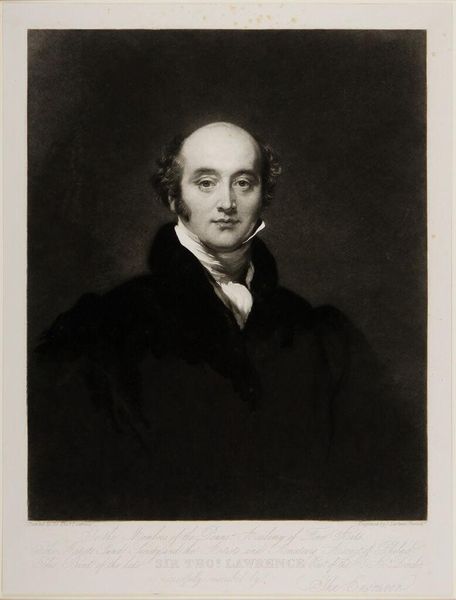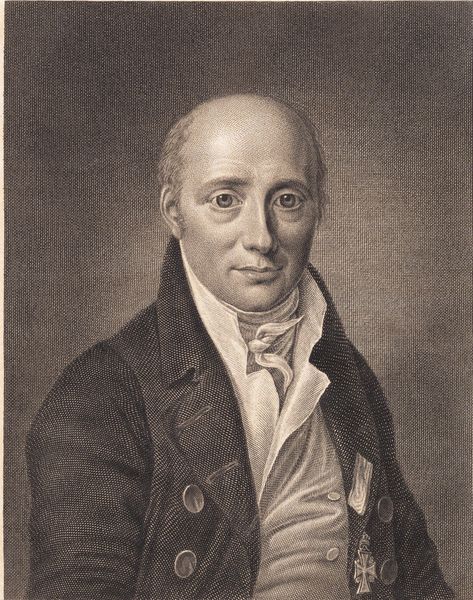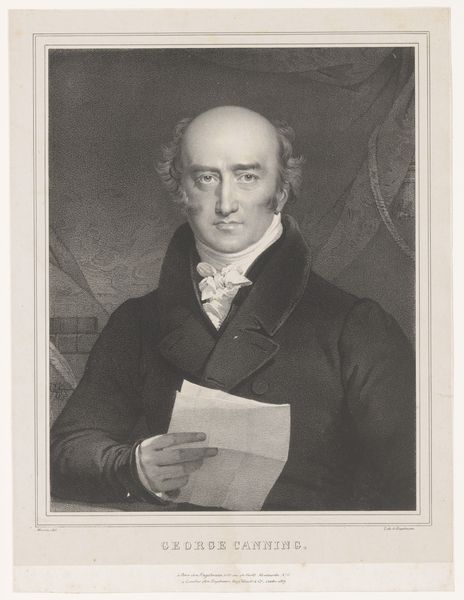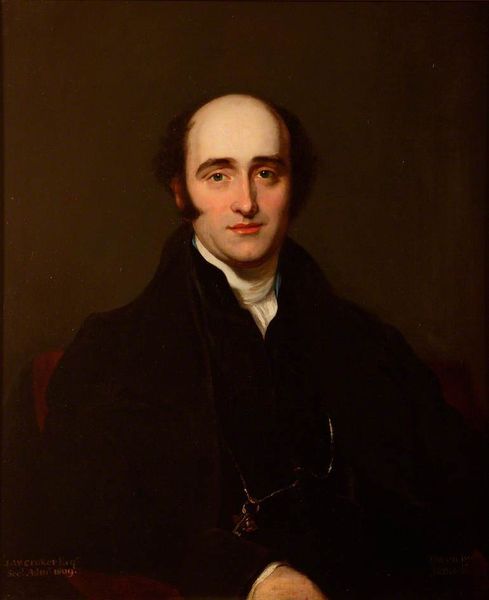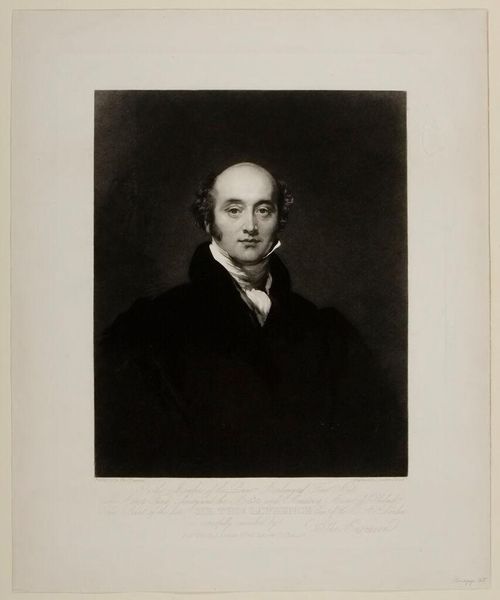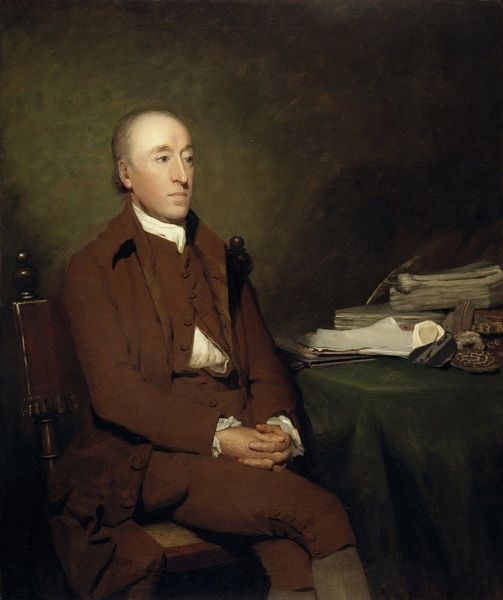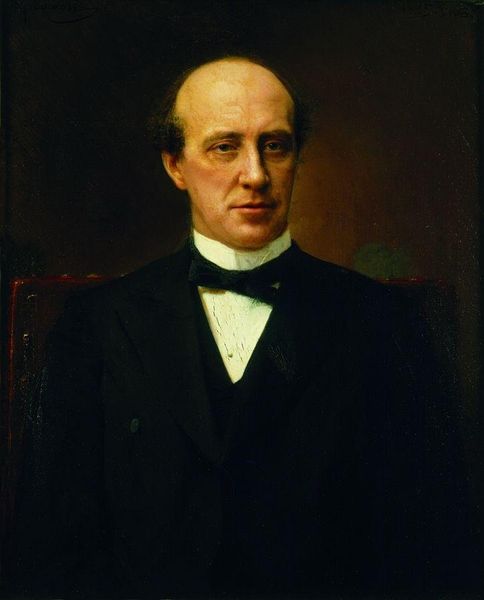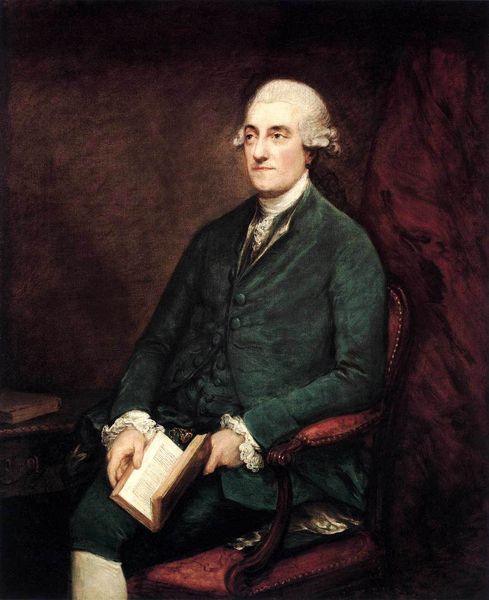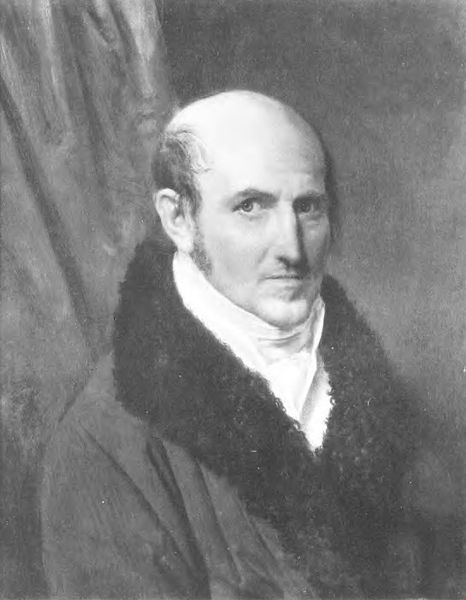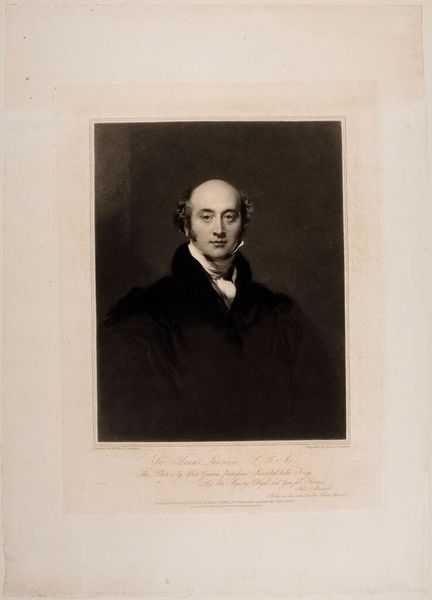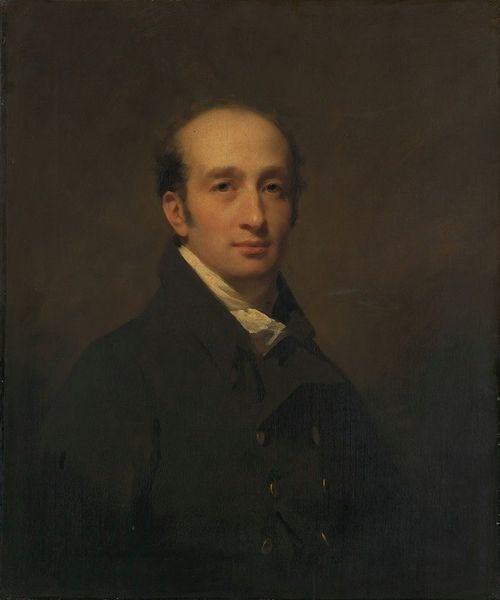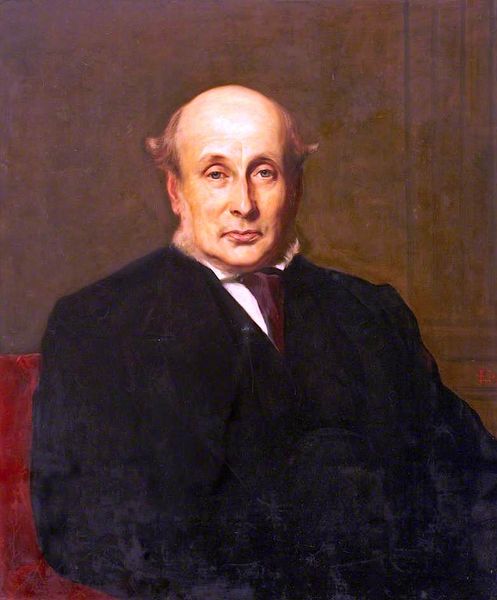
Portrait of the Honorable George Canning, M.P. c. 1822
0:00
0:00
painting, oil-paint, sculpture, oil-on-canvas
#
portrait
#
neoclacissism
#
portrait
#
painting
#
oil-paint
#
sculpture
#
romanticism
#
black and white
#
history-painting
#
oil-on-canvas
Dimensions: 36 × 28 in. (91.4 × 71.1 cm)
Copyright: Public Domain
Curator: It always strikes me how a portrait can seemingly capture a whole life. Look at the oil on canvas of “Portrait of the Honorable George Canning, M.P.,” crafted around 1822 by Thomas Lawrence. Isn’t there an air of untold stories clinging to it? Editor: My first thought is simply how austere it is, a study in light and shadow. The formality is palpable, isn’t it? It speaks of power and the rather constrained social mores of the era, but is this portrayal genuine, or is it carefully constructed propaganda? Curator: Possibly both? Lawrence was incredibly sought after. I mean, his portraits weren’t merely likenesses; they were practically social currency. But notice how Canning's gaze is direct, unwavering, yet there's also a touch of vulnerability in the eyes...as though he is confiding in us, inviting our assessment. Do you feel that? Editor: I agree that there’s that intriguing play between authority and almost, dare I say, submission to the viewer's gaze. Considering Canning's position within a colonial framework, and especially that gesture – a hand gently touching his face, almost masking, literally embodying how powerful figures manage their public image and vulnerability—or the performance of it—while navigating historical responsibility. What do you think the black color represents? Curator: You know, his gesture reminds me of someone caught in contemplation before making a rather daring decision. It seems like he is listening closely. Also, given the fashion of the time, black was so common and it allows Lawrence to truly emphasize Canning’s face through his control over the white of the shirt. Editor: Yes, and his face reads, to me, less as innocent than carefully neutral. Think about the function of portraiture within a patriarchal society. How often were men represented in ways meant to reinforce dominance? Curator: Absolutely. Lawrence was brilliant at toeing that line—projecting power, yes, but also imbuing his subjects with a certain…humanity. Do you know what I mean? As if hinting at the inner workings behind the political machine. Editor: It is like he wants to communicate on a spiritual and mundane level. I love when the paintings allow that freedom. Thinking more, these power dynamics continue, and even now as an observer I wonder about the ethical tightrope of depicting figures implicated in historical systems of oppression. Curator: Food for thought indeed! It all comes down to perspective. Editor: Exactly, and with that, this image can speak, if we allow it.
Comments
No comments
Be the first to comment and join the conversation on the ultimate creative platform.
